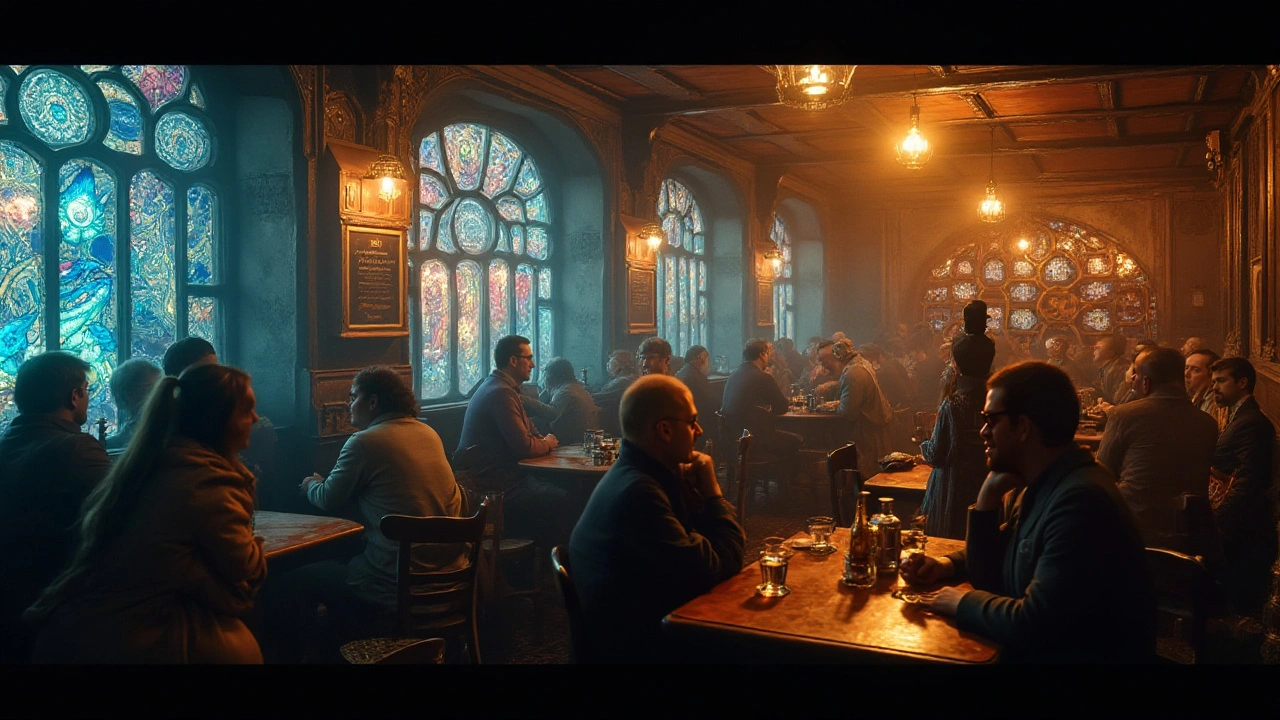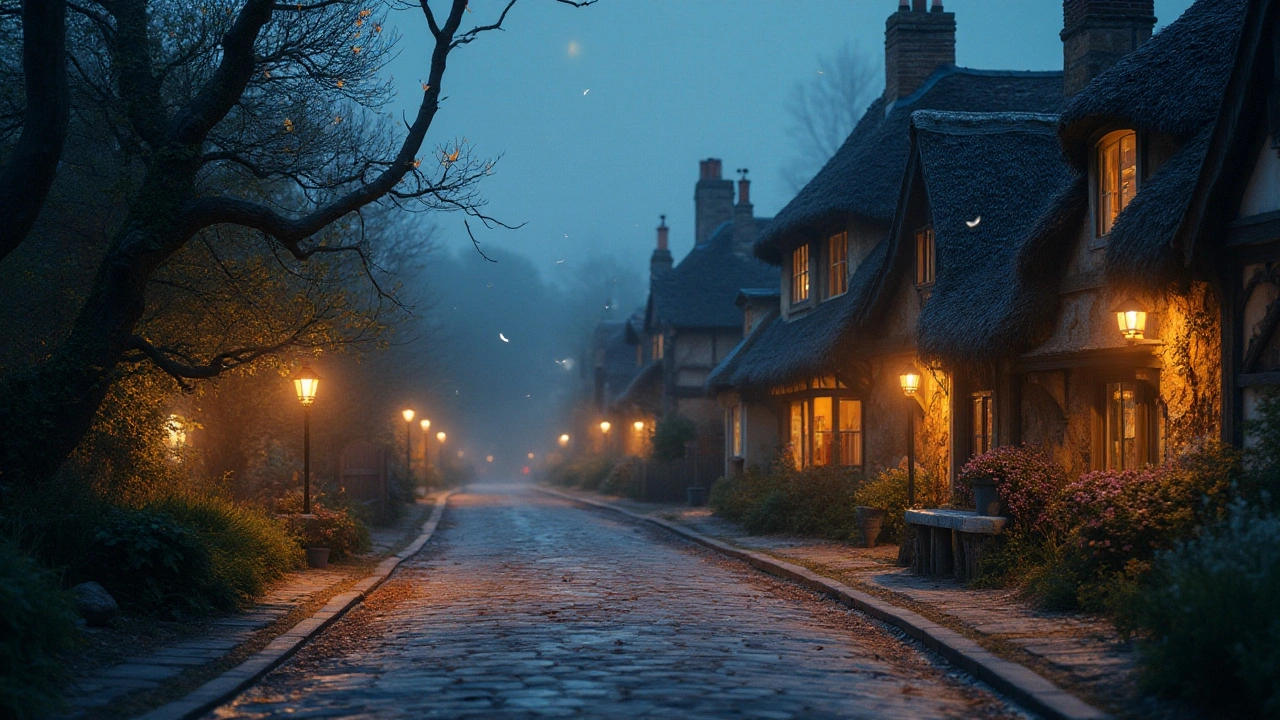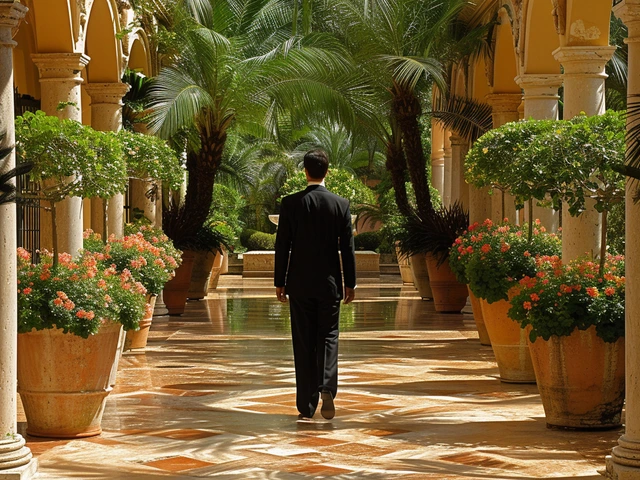Magical realism has a unique charm that captivates readers, drawing them into worlds where magic dances within the fabric of reality. Unlike fantasy, which often creates entirely different worlds, magical realism finds the extraordinary hidden in the mundane. Imagine a bustling city where the air is filled with whispered secrets that only certain people can hear or a small town where dreams tend to seep into waking life, nudging people into unexpected paths.
This literary genre has a rich history, tracing its roots back to Latin American writers who skillfully intertwined vivid realism with fantastical elements, offering profound insights into human nature and society. It’s a genre where the inexplicable becomes routine, and the everyday is infused with enchantment, challenging readers to see the world through a new lens.
For writers, magical realism offers a playground of unlimited possibilities, blurring the boundaries of what's real and what's imagined. It encourages a different kind of storytelling, where the rules of logic take a back seat to the whispers of intuition and wonder. Dive into the essence of magical realism and discover how its timeless allure continues to inspire and transform literature today.
- The Origins of Magical Realism
- Key Characteristics
- Influential Authors and Works
- Impact on Contemporary Literature
- Writing Tips and Techniques
- Exploring Themes in Magical Realism
The Origins of Magical Realism
The term magical realism first appeared in the early 20th century and was initially used to describe a style of visual art known as "Magischer Realismus" in Germany. This art movement aimed to portray the mysteriousness of everyday life with vivid detail. However, it was in the realm of literature, particularly in Latin America, that magical realism truly flourished and came into its own as a defining genre. The fusion of magic and reality became a vehicle for expressing complex social and political realities, especially during times of cultural upheaval and change.
One cannot discuss the roots of magical realism without mentioning the influential work of Alejo Carpentier, a Cuban novelist who popularized the concept through his notion of "lo real maravilloso" or "the marvelous real." Carpentier believed that Latin America, with its rich blend of history, cultures, and experiences, was a naturally magical and extraordinary place. His work inspired many other writers to explore similar themes, and soon a tapestry of works emerged that redefined how stories could be told. This enchantment with the fantastical and the real intertwined found its ultimate embodiment in the works of notable authors like Gabriel García Márquez and his seminal novel, "One Hundred Years of Solitude."
By the mid-20th century, magical realism became a key literary mode, characterized by a seamless blend of reality and magic that challenges readers to reevaluate their perceptions of the world. It often manifests in stories where the supernatural is commonplace, and reality is just another kind of magic. This style beckoned writers and readers alike to see beyond the surface of the mundane, encouraging a deeper exploration into the meaning and possibilities that lie within life’s contradictions. Its emergence in literature provided an innovative means to critique and reflect upon real-world issues through the veil of the fantastical.
"Reality is not just tangible objects you can touch and see," García Márquez once mused, reflecting on how magical realism invites readers to envision more than what meets the eye.
The genre's rise paralleled political movements across the globe, as many societies sought to grapple with identity, legacy, and post-colonial narratives. In regions like Latin America, where oral traditions and diverse cultural myths play a pivotal role, magical realism offered a voice to the unseen layers of cultural identity. As such, it became a powerful tool for storytelling, enabling writers to weave historical, social, and political threads into narratives that both enchant and illuminate. Through magical realism, a myriad of writers have painted vivid tapestries that continue to enthrall and provoke thought, offering stories that defy the conventional boundaries of fiction.
Key Characteristics
Magical realism is a unique genre that captures the imagination by blending the ordinary with the extraordinary, creating worlds where the mystical exists within the everyday. One of its key characteristics is the seamless integration of fantastical elements into realistic settings, allowing these magical components to appear as natural as any other part of the world. Unlike fantasy, where magic overtly alters the laws of reality, magical realism presents magic as an accepted and unquestioned part of life. This makes everyday events seem mystical and significant, inviting readers to view the mundane through a different lens.
Another distinctive feature of magical realism is the use of symbolism and metaphor to convey deeper meanings. Authors often infuse their narratives with rich, symbolic imagery that challenges readers to interpret the layers of meaning beneath the surface. This symbolic language creates a multi-dimensional story that resonates on both a personal and universal level. Character development in magical realism also defies conventional norms. Characters often embody archetypes or serve as illustrative figures, bridging the gap between the real and the surreal. They exist in a world that blurs the boundaries of time and space, where dreams, myths, and legends are woven into the fabric of reality.
In many instances, magical realism uses a narrative style that focuses on texture and detail rather than plot. This descriptive writing style allows readers to immerse themselves in the vivid tapestry of the story. The intricate details serve to ground the magical elements, making them believable and tangible. This narrative approach is complemented by an often detached or neutral tone, which presents the magical events as routine occurrences without overt commentary or elaborate explanations. As Gabriel García Márquez once remarked,
"What matters in life is not what happens to you but what you remember and how you remember it."This quote captures the essence of magical realism's approach to storytelling, where the memory and experience hold equal weight to the facts themselves.

Influential Authors and Works
Magical realism has attracted a dazzling array of talents over the years, leaving a vibrant imprint on the literary landscape. Perhaps the most renowned figure associated with this genre is Gabriel García Márquez. His masterpiece, "One Hundred Years of Solitude," is often seen as the quintessential example of magical realism, weaving intricate tales of the Buendía family in the mythical town of Macondo. This novel doesn’t just tell a story; it transforms you. Márquez once remarked, "What matters in life is not what happens to you but what you remember and how you remember it." His stories merge the texture of the familiar with episodes of the fantastical, creating a harmonious blend that challenges readers to rethink the fabric of reality.
Another giant in this field is Isabel Allende, whose debut novel, "The House of the Spirits," brought gusts of magic and political dynamism. Drawing from her own familial experiences, Allende's narratives float between the real and the surreal, embracing mythical and historical elements. Her writing is lyrical, resonant with echoes of the past, and lively with supernatural undertones. Allende extends the genre's reach, showcasing how personal and political histories intertwine in whispers of magic.
Jorge Luis Borges, too, shaped the pathways of fiction with his short stories composed at the intersections of myth, philosophy, and the ethereal. Borges’ compendiums like “Ficciones” and “Labyrinths” are filled with labyrinthine plots that invite readers into an intellectual dance with dreams and reality. Though Borges himself never explicitly claimed the magical realism label, his surreal and intellectual motifs certainly resonate within the genre's spectrum.
From North America, Louise Erdrich has wielded magical realism to articulate Native American voices and stories. Her work, “Love Medicine,” elegantly entwines spiritual elements with the concrete aspects of daily life on a Chippewa reservation, blurring the lines between the sacred and the mundane. Erdrich offers a fresh insight, reflecting the genre’s adaptability to diverse cultural narratives and its capacity to articulate rich, nuanced identities.
Interestingly, magical realism’s influence extends beyond literature. Filmmakers such as Guillermo del Toro have drawn from its wellspring to create cinematic experiences that are vividly dreamlike. His films like “Pan's Labyrinth” weave the magical seamlessly into historical contexts, much in the spirit of their literary counterparts. This cultural permeability exemplifies the genre's strength and allure.
A curious note for readers and scholars alike: A study on literary trends highlighted that books labeled as magical realism have seen a steady increase in readership since the early 2000s. Below is a simple representation of this growing popularity:
| Year | Approximate Growth in Readership |
|---|---|
| 2000 | 5% |
| 2010 | 15% |
| 2020 | 30% |
Impact on Contemporary Literature
The influence of magical realism on today’s literary landscape cannot be overstated. Emerging initially from Latin America, particularly through the works of Gabriel García Márquez and Isabel Allende, this genre broke the colonial barriers of storytelling and presented a new way of weaving narratives that felt organic and close to life. Today, this narrative technique has seeped into the writings of authors worldwide, transcending cultural and linguistic boundaries. It has expanded the palette of tools available to contemporary writers, allowing them to experiment with the boundaries between reality and fantasy in innovative ways.
One of the primary ways magical realism has impacted modern fiction is by enriching storytelling with layered meanings. Authors such as Haruki Murakami and Salman Rushdie have incorporated elements of magical realism into their novels, crafting tales that ensnare readers' imaginations while prompting deep introspection about real-life issues. By bending reality, these authors invite readers to consider what truths might be unearthed beneath the ordinary surface. The genre has become a subtle vehicle for critiquing societal norms and exploring philosophical and political themes in a manner that renders them both powerful and palatable.
In the sphere of magical realism, the blending of the ordinary with the extraordinary is achieved so seamlessly that fantastical elements become an unquestioned part of everyday life. This aspect encourages modern writers to push beyond conventional plotlines and delve into the realms of the subconscious, dreams, and folklore. Educators also see the impact of magical realism in classrooms globally; students are introduced to diverse perspectives and encouraged to think critically about the world and its multitude of interpretations. As fiction increasingly echoes the complexities of globalized societies, magical realism provides a versatile lens through which these dynamics can be explored.
As Jorge Luis Borges once reflected, "We accept reality so readily - perhaps because we sense that nothing is real."
Today, the genre's elements can be found not only in literature but also in other forms of art and media, such as film and television. Directors like Guillermo del Toro have drawn heavily from magical realism to create visually stunning films that captivate audiences while conveying deeper messages. These artworks challenge viewers to suspend disbelief and engage with stories at both surface and symbolic levels. This trend has influenced a broad spectrum of creators who seek to blur the lines between the real and the unreal in visually compelling ways.
In conclusion, magical realism stands as a testament to the power of storytelling to transform perceptions. By breaking the conventional rules of fiction, it invites authors and audiences alike to embrace the extraordinary lurking within the ordinary. This genre continues to inspire a range of creative endeavors, leading to an innovation in narratives that resonates on a global scale and across various disciplines. It challenges us to view the commonplace with newfound wonder and to seek the magic within the mundane.

Writing Tips and Techniques
Diving into the world of magical realism is like opening the door to endless creative possibilities. The best way to begin is to understand its core philosophy: the blending of the magical with the mundane. Imagine your story as a tapestry, where threads of real-life experiences intertwine seamlessly with strands of the extraordinary. The key is not just to add magic for the sake of it, but to use it as a tool to reveal deeper truths about the characters and their world. When done right, the result is a rich, layered narrative that engages the reader at multiple levels.
A critical technique involves maintaining a matter-of-fact tone when introducing magical elements. This subtlety is what makes the magic feel so natural in the story's world. Consider Gabriel García Márquez’s approach in 'One Hundred Years of Solitude,' where the extraordinary is presented without any hint of surprise. Readers are guided to accept the magical as an integral part of the character’s reality, which in turn reflects a universal truth. This approach ensures that the fantastical elements don’t overshadow the narrative, but rather, enhance it.
Developing Relatable Characters
Creating relatable characters is essential. They serve as a bridge between the magical and the real, offering a human perspective that readers can identify with. Delve deep into their internal worlds, highlighting both their flaws and strengths. The contrast between the ordinary struggles of the characters and the enchantment around them amplifies the impact of magical realism. For instance, a character might grapple with family dynamics or societal responsibilities while navigating a world where mythical creatures appear on moonlit nights. This dual narrative provides a rich backdrop for exploring universal themes of love, loss, identity, and belonging.
Infusing Settings with Magic
The setting in fiction plays a pivotal role in magical realism, almost becoming a character in itself. Use vivid, sensory details to paint a picture of a world that is both familiar and intriguingly different. A dusty village square might harbor secrets whispered by the wind, or a cityscape could transform under a storm that brings dreams to life. Pino Salgado, the renowned magical realist from Rio, once expressed,
“The secret lies not in the magic we create, but in the reality we uncover beneath it.”The landscape should breathe with stories of its own, inviting readers to explore its depths alongside the characters.
Balancing Realism with Fantasy
Balancing the fantastical elements with real-world issues is an art. Remember that the magic in magical realism often serves as a metaphor to address deeper societal and cultural themes. This genre has historically been a canvas for exploring post-colonial narratives, identity, and power dynamics. So, while crafting your story, think of ways the magical can symbolize real-life tensions or conflicts. For instance, a story might use a never-ending rain as a metaphor for unyielding grief or a miraculous orchard as a symbol of hope in a barren land.
Embracing Cultural Influences
Finally, embrace the cultural influences that shape your narrative. Magical realism is deeply rooted in cultural storytelling traditions, drawing heavily from folklore, myths, and legends. Infusing your writing with these elements not only enriches the narrative but also honors the diverse origins of the genre. Explore folklore from different cultures to inspire your tales, remembering to respect and accurately represent these stories. When done thoughtfully, this can add a layer of authenticity and depth to your literary genre, resonating with readers across the globe.
Exploring Themes in Magical Realism
Magical realism offers a unique space for authors to explore complex themes, bridging the rational with the mystical in ways that challenge the reader's perception of reality. At the heart of this genre lies the balance between the real and the surreal, allowing for a deeper examination of human experiences, cultural identities, and societal norms. One prominent theme often seen in magical realism is the exploration of identity. Writers delve into personal and collective identities, reflecting on how culture, heritage, and personal beliefs shape who we are. Through magical elements, transformative and illuminating moments occur, offering insights into the characters' internal struggles and triumphs.
The genre also tackles the passage of time in intriguing ways. In magical realism, time doesn't always follow the linear path we expect. Instead, it's flexible, sometimes even circular, echoing the timeless nature of myths and legends. This treatment of time allows authors to show how past experiences continue to ripple into the present, affecting characters and events in profound ways. By reimagining time, authors provide a form of narrative freedom that deepens the reader's engagement with the story's larger implications.
Another recurring theme is the intersection of nature and the supernatural. In magical realism, natural elements often possess otherworldly qualities, blurring the lines between what is earthly and what is beyond comprehension. This connection invites readers to reconsider how they view the environment around them, often serving as a commentary on ecological consciousness. The supernatural aspects are not mere plot devices, rather they emphasize the sacredness and mystery intertwined with nature, prompting both characters and readers to appreciate the world's intrinsic beauty.
Family and community also take center stage in these narratives. Through magically enfused interactions, characters confront familial obligations and community expectations, navigating their complexities with a touch of enchantment. This theme highlights the tension between individual desires and communal roles, often reflecting larger societal issues. How do personal dreams find a place within the intricate web of relationships? Magical realism explores this dynamic with nuance, encouraging a reflection on the interconnectedness of human bonds.
Finally, social critique often threads through magical realism, using fantastical elements to shed light on real-world issues. Whether addressing themes of political turmoil, social injustice, or cultural repression, this genre reveals the underlying strangeness and oftentimes the absurdity of these situations through the eyes of its characters. The magical elements are not simply narrative quirks; they provide readers with a fresh perspective on stark realities, urging them to question and understand the deeper truths behind these layers.
"Magical realism is all about weaving the extraordinary into the fabric of the ordinary, and in doing so, it reveals profound truths about the world we live in." — A statement often associated with critical analyses of the genre.




